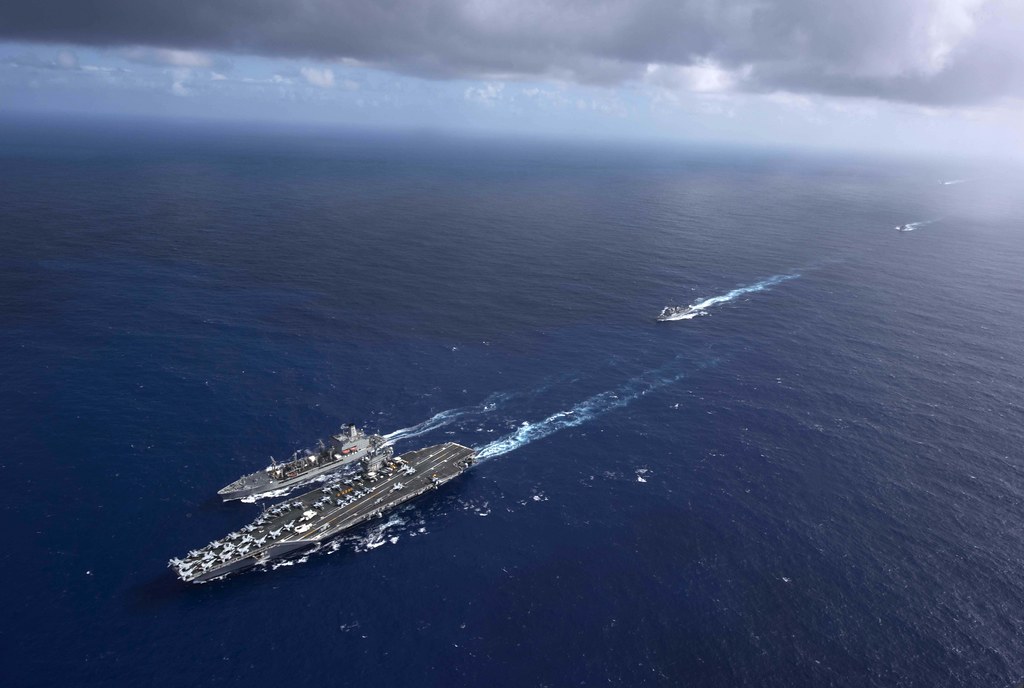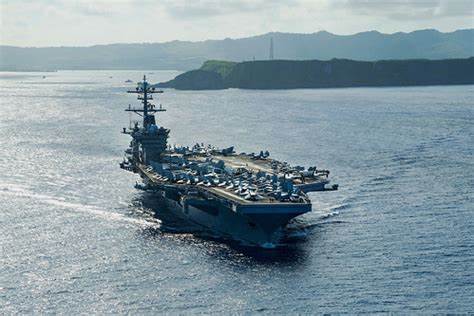
In a world where technological marvels like aircraft carriers symbolize national might and command the high seas, military exercises reveal that even the giants have their Achilles’ heels.

Take the startling outcomes of separate naval exercises in 2005 and 2015 where, in simulated combat, relatively inexpensive submarines from France and Sweden “sank” two of the United States Navy’s aircraft carriers.

The exercises exposed a chink in the armor of naval giants and showcased the potency of underwater stealth and the value of advanced submarine capabilities against seemingly invincible adversaries.

During the year 2015, the Saphir, a Rubis-class submarine from France, engaged in a military exercise alongside the US Carrier Strike Group 12.

The USS Theodore Roosevelt, a nuclear-powered aircraft carrier of the Nimitz class, came with a price tag of $4.5 billion in 2007 dollars.

Stretching over 1,000 feet in length and accommodating more than 5,000 sailors and 90 aircraft, the Theodore Roosevelt stood as a colossal floating city and a formidable presence in the seas, representing one of the most technologically advanced warships globally.

In contrast, the Saphir carried a cost of approximately 8,500,000 francs, notably lower than the nearly $5 billion investment in the Theodore Roosevelt.

The war exercise, conducted off the coast of Florida, unfolded in two distinct stages.

In the initial phase, the Saphir was integrated into the operations of the US Navy to aid in the detection of a simulated enemy submarine.

Subsequently, during the second phase, the scenario shifted with the Saphir assuming the role of the adversary submarine, challenged with locating and neutralizing the USS Theodore Roosevelt.

In a remarkable turn of events, the modest Saphir managed to elude detection by the Roosevelt and her accompanying escort vessels.

Eventually, the Saphir successfully “sank” the Roosevelt, underscoring the fact that even a significant investment of nearly $5 billion did not render the warship impervious to threats.

Similarly, in a 2005 drill, the Swedish HSMS Gotland, leveraging its advanced stealth technology, managed to bypass the USS Ronald Reagan’s battlegroup defenses and “sank” the aircraft carrier.

The Gotland, a small diesel submarine costing only $100 million, repeatedly demonstrated over two years its ability to evade detection and challenge the U.S. Navy’s anti-submarine tactics.

Military might is not solely determined by the price tag of the assets employed. The historic examples are numerous: improvised explosive devices (IEDs) in Iraq, shoulder-launched missiles downing Soviet aircraft in Afghanistan, and the attack on the USS Cole by a small boat armed with explosives.
Relevant articles:
– A ‘Cheap’ French Submarine ‘Sank’ a $4.5 Billion U.S. Navy Aircraft Carrier, The National Interest
– A $100 Million Submarine ‘Sank’ a $4.5 Billion U.S. Navy Aircraft Carrier, The National Interest
– French Submarine’s War Game Victory Against USS Theodore Roosevelt Exposes Carrier Vulnerabilities, Trendy Digests

